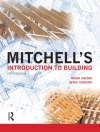Integrated Project Design/Delivery is not new, but in recent years, it has been achieving the status of yet another acronym, more connected to its contractual details than to the actual meaning of the profound change in how work is to be developed. This book clarifies this situation by presenting several examples in academia, research and practical design situations, ranging from the use of old-style expression media, such as handmade drawings, to comprehensive digitalisation processes. The IPD model is shown as an effective way to tackle the ever-increasing challenges of balancing productivity with the urgent demands for designs that embrace decarbonisation, net-zero buildings, energy efficiency, modularisation and disassembly, including lessons learned from Industrial Design. IPD is a mindset that clashes with the traditional academic model of placing architecture and engineering in different (and frequently opposite) fields. Actual examples of course syllabuses’ that disrupt this approach are also presented, showing how wide collaboration from the early stages of the design process can improve the sought-after result, providing future professionals with a hands-on experience of its efficiency as a work methodology.
قائمة المحتويات
Master Course in Integrated Building Design and Construction: a project-based learning approach.- Educating Future Professionals for Decarbonization and Digitalization through Integrated Design.- DRAWING CREATIVITY AND COMMUNICATION.- Learning from the Smithson’s ‘project-theory’: an integrated project design ‘avant la lettre’.- Kinetic bistable shading screens: comparing brute force enumeration with algorithmic sampling methods for se‐lecting high‐quality design configurations.- Integrated Project Design to reach the net-zero building.- The Path to Integrated Project Design through the Examples of Industrial/Product/Engineering Design: a Review.












